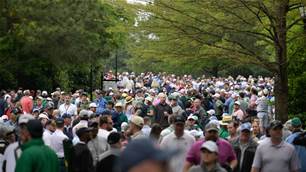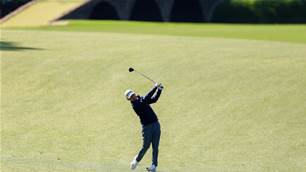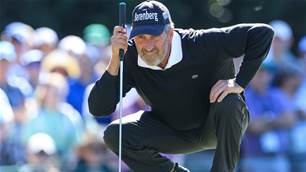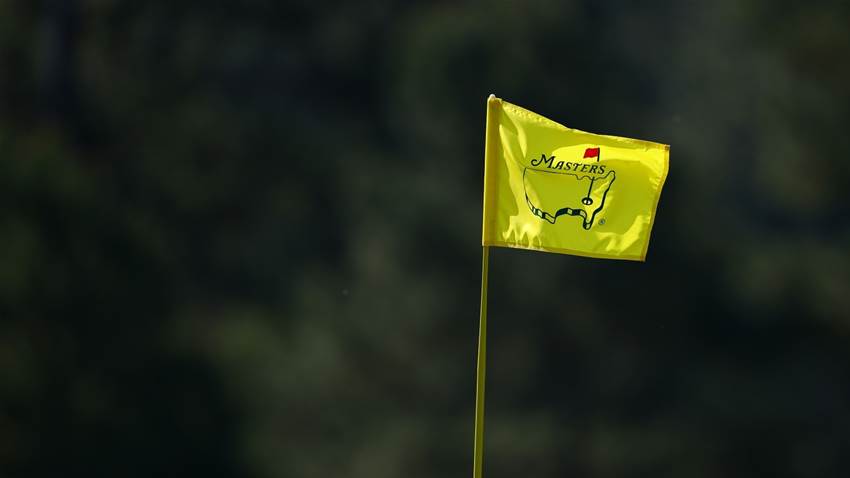It really should begin with a member of the Monty Python team announcing “and now for something completely different”. But it doesn’t, of course. Instead, “Chairman Fred Ridley” does the opening honours at his own annual eve-of-Masters press conference.
Which is, self-importantly, the only time the ostentatious interview room in the spacious media centre (think Gone with the Wind) is used the day before the "toonamint" kicks off. It is yet another example of what the green-jacketed membership of a club still less than a century old likes to refer to as “traditions”.
I say press conference, but what I really mean is “state of the Augusta National nation” delivered in a style more akin to a man about to nod off in an armchair in front of an open fire than one genuinely energised by the subject matter. Thus Ridley’s droning, but invariably self-congratulatory monotone, does at least offer a potentially great service to chronic insomniacs everywhere.
To be fair, there were moments of sanity amidst the nonsense, as Ridley responded to what turned out to be 13 questions from a media routinely cowed into subservience by the implicit threat of lost credentials 12 months from now.
Before the well-heeled world of golf reassembles two-hours’ drive east of Atlanta in 2025, a multi-storey car park will be in place underneath what was once the practice range, he revealed.
“I would like to share with you the commencement this summer of a two-phase project that will significantly elevate the experience of all Masters competitors,” said Ridley. “Phase 1 will include underground parking and will be operational next year. The second phase of this project will open in 2026 and will feature a three-level, state-of-the-art facility, designed to anticipate every need for players, their families and support teams. We'll have more details when we are together next April.”
One day soon, the Masters participants will be all but invisible to patrons and the press, except when the (distant) players choose to practise on and/or play the course. Maybe the introduction of what Ridley referred to as “a new expansive concession, restroom and merchandise facility between No. 8 tee and No. 18 fairway” is designed to console the “patrons” (never spectators or fans).

To be fair (2), Ridley also took time to pay appropriate tribute to the sadly departed 1956 Masters champion Jackie Burke and five-time Amateur champion and former R&A secretary, Michael Bonallack. Both men were more than worthy of such recognition.
To be fair (3), Ridley also backed up his previously well-chronicled concern for the distances modern golfers can hit golf balls. However, reading between the lines, it would seem he shares the widespread scepticicm that the recent measures taken by the R&A and USGA will fail to make any significant difference in the short, medium or long-term.
“What we found over the years is that when we lengthen the golf course, everybody says it's really long, and then two or three years later it's not so really long,” said Ridley.
“So my guess is that even when this change is implemented, maybe other aspects of technology that are within the rules and the physicality and technical ability of the players will catch up. I don't believe that we will start building new tees closer to the greens. It's a possibility, I suppose, but I doubt it. Particularly since nothing is going to be implemented for quite some time. We have some time to look and see what's going to happen. We have some more room, but we don't have a lot. So I'm holding to that 8,000-yard red line, and I just hope we never get there.”
Still, the spectre of the 8,000-yard Masters is real, even if it is one the green-jacketed chairman views with commendable distaste. He was also refreshingly outspoken with regard to 2000 Masters champion Vijay Singh’s suggestion that the infamous par-3 12th hole be lengthened.
“I would say with a hundred percent certainty that it would not be lengthened during my tenure,” responded the 1975 U.S Amateur champion, who twice defeated future Masters champion Sandy Lyle in the 1977 Walker Cup matches at Shinnecock Hills. “That's almost like asking can we touch up the Mona Lisa a little bit. I think the 12th hole at Augusta is the most iconic par-3 in the world. It has been and I won't say it always will be, but I think it always will be.
“It is such an iconic hole that's had so many important moments in the Masters that I'm not sure that another 10 yards would really make a difference. Players are hitting short irons, but it doesn't seem to matter; the hole is very difficult.”
Inevitably, the spectre of LIV Golf reared its not particularly attractive head. Will we ever see LIV players qualifying for invitations to Augusta through their play on the Saudi-funded circuit?
“I don't know the answer to that,” said Ridley. “I think it will be difficult to establish any type of point system that had any connection to the rest of the world of golf; they're basically, not totally, but for the most part, a closed shop. There is some relegation, but not very much. But I don't think that prevents us from giving subjective consideration based on talent, based on performance to those players.
“Our goal is to have, to the greatest extent possible, the best field in golf, the best players in the world. Having said that, we never have had all the best players in the world, because of the structure of our tournament. It is an invitational. It is limited field; it's a small field. So we're in a little bit different situation. But we do have flexibility.”
Only on the course, though. Everywhere else inside the large fences which surround Augusta National Golf Club, the Orwellian atmosphere prevails, four decades on from 1984.
Mister chairman has spoken.
Related Articles

Huggan: Before too long, Augusta’s mildly amusing rules gravitate to irritating

Morikawa primed to pounce at the majors again













